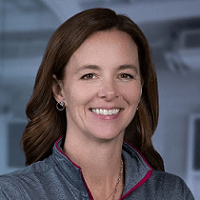
Michael Casamassa, VP of Sales for Payer Solutions, Henry Schein Medical
LinkedIn: Michael Casamassa
LinkedIn: Henry Schein
Lucienne Ide, MD, PhD, CEO, Rimidi
LinkedIn: Lucienne Ide
LinkedIn: Rimidi

Remote patient monitoring (RPM) is continuing to grow in popularity. The worldwide RPM market is estimated to hit $1.73 billion by 2027. And eMarketer estimates that 70.6 million patients in the United States, or 26.2% of the population, will use RPM tools by 2025. As the health care industry evolves and moves into the era of patient consumerism, it is important to adapt to industry shifts, expand virtual care opportunities, implement effective RPM, and ultimately drive patient engagement.
Here are tips on how to do that.
Adapting to Industry Shifts
There are several macro-level industry trends that support the need for, and ultimate use of, RPM. First, is that we are seeing procedures migrate from high-cost settings to lower-cost settings such as ambulatory surgery centers (ASCs) and outpatient facilities. ASCs efficiently provide cost-effective, high-quality care. Second, is the rise of patient consumerism and a focus on more convenient care. Patients are actively shopping for and vetting their care options prior to selecting a provider. Third, is value-based care – designing care so that it focuses on clinical outcomes, total cost of care, and the patient experience. And fourth, is nurse and clinician shortages. This means that the future of health care must be more efficient in which caregivers can leverage technology and tools (like RPM software) to manage larger patient bases. Each of these shifts reinforces the need for new technologies in practices and different care options for patients.
Expanding Virtual Care Opportunities
With the industry shifts mentioned above, expanding virtual care opportunities can play a part in enhancing patient engagement and outcomes. Virtual health care encompasses a range of services delivered remotely such as telemedicine, RPM, and hospital-at-home. The rise of direct-to-consumer virtual care is competing with traditional care delivery and established providers. To proactively address this and attract and retain patients, providers should embrace these advancements as modalities for connecting with and supporting their patients. For example, telemedicine solutions can help increase access to care for patients in rural or underserved areas, and it is important to continue to build on the adoption that accelerated during the pandemic out of necessity. RPM provides continuity of care for patients with chronic health conditions and addresses many common barriers to care – such as access to transportation, time off work, and language divides – that impact the ability of patients to get ongoing and follow-up medical care. Ultimately, virtual care such as RPM should continue to gain popularity amongst patients due to its convenience and impact on their health.
Implementing Effective RPM
Now that we’ve discussed the industry shifts and virtual care opportunities, let’s review the initial steps to start an RPM program:
Identify a Starting Point and Build on Success
Practices should think about their patient population and who could benefit the most from RPM. What are your population health goals? Do you want to improve hypertension control, reduce readmissions, improve diabetes control?
Typically, practices start with a single use case to get used to RPM and expand from there. Common starting points include:
- Patients with poorly controlled diabetes
- Patients with poorly controlled hypertension
- Patients with obesity beginning a new weight management treatment
- Patients with heart failure who have been admitted to the hospital
Determine if There Are Staff to Perform the Monitoring
Before identifying an RPM company to partner with, practices need to identify if they have team members available who can perform the monitoring and if they want to commit existing staff to the program. Not all RPM companies offer options for both outsourced monitoring as well as clients’ performing the monitoring themselves. So it is important to determine the right model for your practice.
If a clinic will be doing the monitoring, ensure there is a program lead who will champion the program to patients and colleagues.
Select an RPM Platform
When selecting the right RPM platform, practices should review the following items:
- Electronic health record (EHR) integration
- Ease of use
- Patient adoption
- Outsourced clinical monitoring options
- Device quality
- Amount of use cases covered
- How data is transmitted
In addition to these steps, practices can rely on their solutions partner to help guide them throughout the process of identifying the right RPM solution for them.
Invest in Onboarding
The success of an RPM program depends on both practice and patient engagement. So, it is important to have buy-in from the referring clinicians by communicating the value it will bring to their practice and their patients. Equally important, patients need to understand how they can benefit from the program and trust that the clinical monitoring team they work with is aligned to their health care provider.
Driving Patient Engagement
At the end of the day, patient engagement is the cornerstone of health care. Each of the elements mentioned in this article can play a role in patient engagement, and it is important to continue to foster meaningful patient-provider interactions in the virtual realm. RPM platforms have the potential to increase patient engagement because they can help facilitate consistent communication between patients and providers. When a provider can see what’s going on with their patients in between clinic visits, they’re able to proactively engage the patient with a more personalized approach, intervene when necessary, and encourage patients to be more active in managing their health. Because of this, patients may be more likely to engage with treatment plans that are tailored specifically to them. Overall, by having virtual care options such as RPM, providers can meet patients where they are today.
